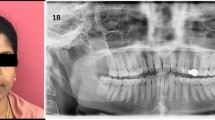Abstract
The purpose of this study was to document the presence of a sublingual gland (SLG) herniating inferiorly through the mylohyoid muscle into the submandibular area. A total of 100 half-heads of 50 adult Korean cadavers were enrolled in this study. The floor of the mouth was dissected from the neck, and mylohyoid muscle patency and position of the sublingual gland were evaluated. Demographic factors of the donor and characteristics of the herniation were evaluated. Herniation was found in 29 (58.0 %) of the 50 cadavers or 42 of the 100 half-heads. Herniation was more frequently observed in females than in males (p = 0.009). However, no laterality was observed. Classifying the location of SLG herniation from the midpoint of the mandible to the hyoid bone into 3 regions, 32 (63 %) of herniations were found in the anterior one-third. No ranula formation was observed. The size and weight of normal glands tended to be larger than those of herniated glands, but no statistical significance was observed. An SLG hernia is a very common condition and is more frequently observed in females. As such, SLG herniation should be considered when a submental neck mass is evaluated.



Similar content being viewed by others
References
Radlanski RJ, Renz H, Tabatabai A (2001) Prenatal development of the muscles in the floor of the mouth in human embryos and fetuses from 6.9 to 76 mm CRL. Ann Anat Anat Anz Off Organ Anat Ges 183(6):511–518. doi:10.1016/s0940-9602(01)80057-1
Kiesler K, Gugatschka M, Friedrich G (2007) Incidence and clinical relevance of herniation of the mylohyoid muscle with penetration of the sublingual gland. Eur Arch Otorhinolaryngol 264(9):1071–1074. doi:10.1007/s00405-007-0321-1
Windisch G, Weiglein AH, Kiesler K (2004) Herniation of the mylohyoid muscle. J Craniofac Surg 15(4):566–569
Jain P, Jain R (2014) Types of sublingual gland herniation observed during sonography of plunging ranulas. J Ultrasound Med 33(8):1491–1497. doi:10.7863/ultra.33.8.1491
Harrison JD, Kim A, Al-Ali S, Morton RP (2013) Postmortem investigation of mylohyoid hiatus and hernia: aetiological factors of plunging ranula. Clin Anat 26(6):693–699. doi:10.1002/ca.22212
Engel JD, Harn SD, Cohen DM (1987) Mylohyoid herniation: gross and histologic evaluation with clinical correlation. Oral Surg Oral Med Oral Pathol 63(1):55–59
White DK, Davidson HC, Harnsberger HR, Haller J, Kamya A (2001) Accessory salivary tissue in the mylohyoid boutonniere: a clinical and radiologic pseudolesion of the oral cavity. AJNR Am J Neuroradiol 22(2):406–412
McIntosh A, Hutchinson A, Roberts A, Withers H (2000) Evidence-based management of groin hernia in primary care—a systematic review. Fam Pract 17(5):442–447
Ponten JE, Somers KY, Nienhuijs SW (2012) Pathogenesis of the epigastric hernia. Hernia 16(6):627–633. doi:10.1007/s10029-012-0964-8
McGurk M, Eyeson J, Thomas B, Harrison JD (2008) Conservative treatment of oral ranula by excision with minimal excision of the sublingual gland: histological support for a traumatic etiology. J Oral Maxillofac Surg 66(10):2050–2057. doi:10.1016/j.joms.2008.01.019
Davison MJ, Morton RP, McIvor NP (1998) Plunging ranula: clinical observations. Head Neck 20(1):63–68
Jain P, Jain R, Morton RP, Ahmad Z (2010) Plunging ranulas: high-resolution ultrasound for diagnosis and surgical management. Eur Radiol 20(6):1442–1449. doi:10.1007/s00330-009-1666-1
Lee JY, Lee HY, Kim HJ, Jeong HS, Kim YK, Cha J, Kim ST (2016) Plunging ranulas revisited: a CT study with emphasis on a defect of the mylohyoid muscle as the primary route of lesion propagation. Korean J Radiol 17(2):264–270. doi:10.3348/kjr.2016.17.2.264
Author information
Authors and Affiliations
Corresponding author
Ethics declarations
Funding source
No funding was secured for this study.
Financial disclosure
No financial relationships relevant to this article to disclose.
Conflict of interest
The authors disclose no conflicts of interest to disclose.
Ethical approval
This article does not contain any studies with human participants or animals performed by any of the authors.
Additional information
H. C. Yang and S. Y. Kim contributed equally to this work.
Rights and permissions
About this article
Cite this article
Yang, H.C., Kim, S.Y., Kim, S.K. et al. A cadaveric study on mylohyoid herniation of the sublingual gland. Eur Arch Otorhinolaryngol 273, 4413–4416 (2016). https://doi.org/10.1007/s00405-016-4095-1
Received:
Accepted:
Published:
Issue Date:
DOI: https://doi.org/10.1007/s00405-016-4095-1




